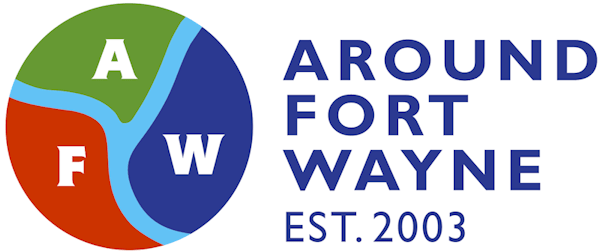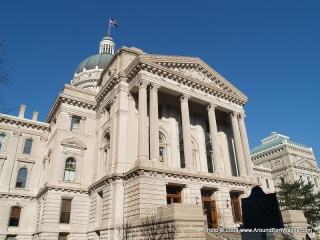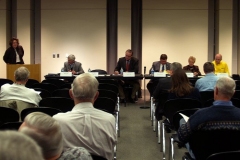An e-mail from Aaron Smith at Watchdog Indiana:
Hello Allen County Watchdogs,
State Senators Gary Dillon (219-248-8765; S17@in.gov) and Travis Holdman (260-638-4420; S19@in.gov) cast Taxpayer Friendly YES votes on December 8 in the Indiana Senate Tax and Fiscal Policy Committee to send the constitutional amendment in Senate Joint Resolution 1 to the Senate floor for final consideration.
State Representatives Randy Borror(260-493-6118; H84@in.gov), Jeff Espich (260-543-2546; H82@in.gov), and Phyllis Pond (260-749-1444; H85@in.gov) cast Taxpayer Friendly YES votes on December 14 in the Indiana House Ways and Means Committee to send the constitutional amendment in House Joint Resolution 1 to the House floor for final consideration.
The identical SJR 1 and HJR 1 constitutional amendments would make the 1% – 2% – 3% property tax caps permanent AND protect property tax deductions and credits from constitutional challenge. For your information, the Watchdog Indiana SJR 1 testimony before the Tax and Fiscal Policy Committee is below (under my name).
Please contact Senator Dillon, Senator Holdman, Representative Borror, Representative Espich, and Representative Pond and thank them for their Taxpayer Friendly committee votes, and urge them to again vote YES on SJR 1 and HJR 1 when they reach the Senate floor and House floor for final consideration.
Please forward this limited-distribution Watchdog Indiana E-mail Update to your friends, neighbors, and family members who live in Allen County.
Watchdog Indiana is a non-profit, non-connected, and non-party advocate for good government that focuses on the state and local tax burden of Hoosier working families. An online community is established where Hoosiers come together voluntarily to help encourage our state and local governments better respond to the needs of working families. Watchdog Indiana was established November 14, 2001, and the Watchdog Indiana website can be found at www.watchdogindiana.org.
If you received this E-mail indirectly from someone else, you can get E-mail Updates sent directly to you from Watchdog Indiana by putting SUBSCRIBE in the subject line of an E-mail to taxless3@comcast.net.
[…] Happy Trails
Aaron Smith
Watchdog Indiana Testimony
Senate Joint Resolution 1
Senate Tax and Fiscal Policy Committee
December 8, 2009Thank you for this opportunity to express my opinions regarding the constitutional property tax caps in Senate Joint Resolution 1.
SJR 1 must pass out of this committee and be passed by the full Senate next session so Hoosiers statewide can decide in a referendum next November if the 1% – 2% – 3% property tax caps become part of the Indiana Constitution. If you know where your ALDI quarter is, then you understand the number one reason to let your fellow Hoosiers decide if the property tax caps are enshrined in our Constitution. Before considering this number one reason, let’s review some other reasons why SJR 1 is Taxpayer Friendly.
SJR 1 is Taxpayer Friendly because it will break the cycle of property tax relief failure where working families suffer burdensome property tax increases along with other tax increases. The most recent example of this failure is the 2002 sales tax increase that was supposed to lower homeowner property taxes by 16.3% in 2003. Starting in 2003 and continuing through 2007, seventeen legislative and administrative actions taken by the General Assembly and Governor, together with increased local government spending, decreased the promised 16.3% homeowner property tax relief to just 2.4%.
In 2007, 55% of Hoosier homeowners had a property tax burden greater than 1% of their assessed value and the average homeowner had a property tax bill that was 1.6% of assessed value. The 2008 sales tax increase enabled the 2008 property tax relief legislation to lower homeowner property taxes so that 80% of homeowners statewide now pay property taxes that are less than 1% of assessed value. The SJR 1 constitutional caps will make permanent the current legislative-only caps by putting them beyond the reach of any General Assembly and judge to renege, retract, and take away. The homeowner property tax relief promised by the 2008 sales tax increase cannot be eroded beyond the promised cap levels unless approved by voters in a local referendum. The 1% property tax cap in SJR 1 keeps the average homeowner property tax bill from returning to the 2007 level of 1.6% of assessed value.
Indiana General Assembly efforts to establish property tax caps have a short, but unhappy, history. In 2006, amid considerable election year commotion, a 2% property tax cap on homesteads, apartment complexes, and other residential rental property was established beginning in 2007 for Lake County and 2008 for all other counties. The 2% cap was to be extended to all other real and personal property in 2010. This 2% cap was pretty much wiped out the very next year with NO fanfare when school general funds and TIFs were exempted the cap, the watered-down 2% cap was limited only to homesteads instead of all residential property, and the 2010 cap for all other real and personal property was increased from 2% to 3%. The constitutional property tax caps in SJR 1 are REQUIRED to keep our current 1% – 2% – 3% caps from suffering the same disappearing fate as the prior 2% cap.
Last year’s legislation turned the Distressed Unit Appeals Board into a ticking property tax bomb. The bureaucrat and single interest dominated Appeals Board has the power to increase the property taxes of a distressed unit beyond the legislative caps. The SJR 1 constitutional caps will make unconstitutional any Appeals Board decision that increases a political subdivision’s property tax beyond the promised cap levels. Without SJR 1, there is no limit as to how much the Appeals Board can ultimately increase property taxes.
Last year’s legislative caps are blatantly unconstitutional without SJR 1. The SJR 1 constitutional property tax caps must be passed to keep the deep-pocketed single interest groups from having the legislative caps eliminated by the courts.
The net effect of 2010 property tax caps on the total expenditures of Indiana’s K-12 public school systems will be manageable. According to the latest LSA report, the state’s 293 K-12 public school systems will experience a net 2010 caps revenue decline of $71.3 million. This best way to put this $71.3 million revenue decline in perspective is to compare it to grand total school spending. Schools spend state, local, and FEDERAL revenue, and the latest available grand total expenditures data from the Indiana Department of Education shows that all our schools spent $14.3 billion in the 2008 calendar year. The $71.3 million property tax caps revenue decline in 2010 is only 0.5% of the $14.3 billion grand total expenditures of Indiana’s public schools in 2008. Of the 293 K-12 school systems, 230 of them will experience a 2010 caps revenue decline that is less than 0.6% of their 2008 grand total expenditures. Fifty school systems will experience a 0.6% through 1.0% decline, while only thirteen school systems will experience a decline that is more than 1.0%. NO school system will have a 2010 caps revenue decline that is more than 3.0% of its 2008 grand total expenditures. Concern for the fiscal health of our school systems is not a valid reason for opposing SJR 1. Having said this, a legislative fix is probably needed for the caps effect on the transportation fund of some school systems.
If local taxpayers are concerned about the effects of property tax caps on their local school system, current law allows them to approve by referendum funding and capital project increases that are not subject to the caps. Other government units can likewise have their capital projects approved by referendum.
There are some who claim SJR 1 should not be passed because the overall tax burden will not be decreased. It is true that some municipalities in 17 counties may need to impose a local option income tax to maintain essential services. The caps cannot reasonably be expected to reduce the spending of some local governments by more than five percent. However, the SJR 1 caps will make the property tax burden more predictable and the overall tax burden more fair and affordable.
Local taxing units do need another choice when it is necessary to replace revenue lost to property tax caps. The existing local option income tax is imposed county-wide and punishes low-tax areas to benefit high-tax areas. State Representative Jeff Thompson will again file his Property Tax Replacement Plan to address this shortcoming. The Thompson Plan contains a variable Property Tax Cap LOIT that may be imposed by the governing body of every local taxing unit only within the local taxing area. Those who fear that the county-wide LOIT will make it difficult to obtain needed property tax replacement revenue need to work to get the Thompson Plan a hearing in this Committee.
The SJR 1 constitutional caps are also a giant step in the right direction for those who favor complete property tax elimination by giving impetus to elimination efforts. For example, the Jeff Thompson Property Tax Replacement Plan also includes a variable Property Tax Replacement LOIT that replaces the property tax revenue from all real property wholly owned by individuals residing within a local taxing area. Property taxes on real property can be replaced for all homeowners, many small businesses, and most farms within a local taxing area.
Some SJR 1 opponents erroneously claim that the constitutional caps are useless because property tax relief depends on poorly controlled property tax assessments. Future homeowner reassessments will NOT continue to increase at the rate of recent years because ANNUAL market value trending will take the place of reassessments that covered several years at a time. In spite of currently declining home values, homeowner property tax assessments will likely CREEP UP over time, but these modest assessment increases BY THEMSELVES are NOT expected to cause homeowner property taxes to LEAP UP. Indeed, SJR 1 will KEEP homeowner property taxes from leaping up. Of course, it cannot be denied that effective legislative action to improve the assessment process, limit annual assessment increases, and establish a more sensible homestead definition would be MOST welcome.
We must not let the pursuit of perfection be the enemy of what is good. Some disingenuously assert that SJR 1 should be revised because Lake and St. Joseph counties will start with different caps. Instead of 1%, the homeowner caps for Lake and St. Joseph counties will effectively be 1.88% and 1.52% respectively until 2020. Even though the beginning homeowner caps are more in Lake and St. Joseph counties, these caps will result in a 2010 property tax reduction of 36% for the typical Lake County working family and a 34% reduction for the typical St. Joseph County working family. If one word in SJR 1 is changed, the constitution amendment process would have to start all over. Jeopardizing permanent property tax relief is not worth any effort to make SJR 1 more perfect.
SJR 1 is good for business. The property tax cap for all residential rentals, apartments, mobile home land, and long term care facilities is lowered to two percent of their value. The existing business property tax cap of three percent will never be increased, thereby enabling businesses to accurately predict their property taxes so they do not become an unaffordable burden. Business is also protected by current law because property tax revenue shortfalls resulting from property tax caps cannot be shifted to taxpayer classes that have not reached their cap level.
Farm homes and the acre of land they sit on have their property tax capped at one percent of their value. The cap for agricultural land will be lowered to two percent. The American taxpayer has been generous to farmers with various subsidies. Farmers should not begrudge the protection given to other Hoosier working families by the SJR 1 constitutional caps.
The SJR 1 caps do NOT set farm land property taxes at twice the homestead level and business property taxes at three times the homestead level. The caps merely limit maximum property tax burdens, and the General Assembly can use the property tax deductions and credits allowed by SJR 1 to provide property tax relief well below the cap levels. Deep-pocketed lobbyists have already used their access to convince some members of this Committee that the homestead supplemental deduction should be reduced to benefit farms and businesses. Homeowners have NO lobbyist at the General Assembly – our only lobbyist equivalent would be the 1% homeowner property tax cap in SJR 1. Our state representatives MUST support SJR 1 to give homeowners a chance to withstand the property-tax-shifting expertise of the single interest lobbyists who exert so much influence at our Statehouse.
SJR 1 opponents are trying to make the case that Proposition 13, which passed on June 6, 1978, is somehow responsible for the current budget deficit woes of California’s government units. There is research on all sides of Proposition 13 where you can find strong support both for and against constitutional property tax caps. The fact of the matter is that Indiana is not at all like California – California has sustained government overspending by relying on overly-optimistic revenue projections, while Indiana’s government units have done a pretty good job of adjusting and living within their revenue means. It is nonsense to look at California’s budget woes as a reason to oppose SJR 1.
Representative John Day expressed an enlightened position on SJR 1 during his 2008 reelection campaign. On the Indianapolis Star campaign website, Representative Day stated “While I have some doubts about whether the caps should be placed in our Constitution, the question is important enough that all the voters should have a voice on this issue.” It is hoped that all state legislators appreciate that if the collective wisdom of the voters is sufficient for their election, it is also sufficient to decide the fate of constitutional property tax caps by referendum next November.
There are those who point out that the current property tax scheme, of which constitutional property tax caps are a part, will result in some Hoosiers paying more in statewide sales tax and local income tax increases than they receive in property tax relief. For those attuned to political reality, the proper response is “So what?” The terrible tax genie is out of the bottle – no informed citizen can envision a realistic circumstance where the statewide sales tax increase will be rescinded. If local income taxes go up to replace property taxes or replace the revenue lost to property tax caps, the tax burden is properly shifted away from property taxes to income taxes – from a tax NOT based on the ability to pay to a tax that IS based on the ability to pay. It makes no sense to oppose SJR 1 and lose the permanent protection of constitutional property tax caps just because the net property tax relief of some taxpayers is not as great as that of other taxpayers.
I personally am a taxpayer whose sales tax burden increased more than what I have received in property tax relief. My property tax payments both before and after the 2008 property tax reform were less than 1% of my assessed value. In spite of this, I clearly see how constitutional property tax caps are a type of “insurance policy” that protects me from the possible future excesses of my local government. My local government has been taken over by developer-first interests where tax-increasing TIFs, nonsensical municipal annexations, and so-called development initiatives funded by taxpayers are forcing my property tax burden ever higher. If push comes to shove, I can change my buying habits to lessen my sales tax burden and use the property tax caps in SJR 1 to protect my home from the Taxpayer Unfriendly actions of my local elected officials.
In conclusion, I keep the quarter for the shopping cart at my local no-frills, lower-cost ALDI grocery store in the small coin drawer in my car. If your life circumstance is humble enough that you know where your ALDI quarter is, then you understand the number one reason to let your fellow Hoosiers decide the fate of the constitutional property tax caps at the polls next November. For some folks, permanently capped property taxes are the tipping point keeping them from having to make terrible choices between keeping their home, life-enhancing medications, and nutritious meals. Even those who don’t have an ALDI quarter today may be one job loss, one on-the-job injury, or one illness away from needing permanently capped property taxes tomorrow. For the good of ALL your fellow Hoosiers, PLEASE pass SJR 1 out of this committee. A State Senator who votes for SJR 1 is making a Taxpayer Friendly legacy vote that can be looked back on with pride in the coming decades.
Thank you again for this opportunity to express my opinions regarding the constitutional property tax caps in Senate Joint Resolution 1. If it is appropriate, I welcome any questions.


